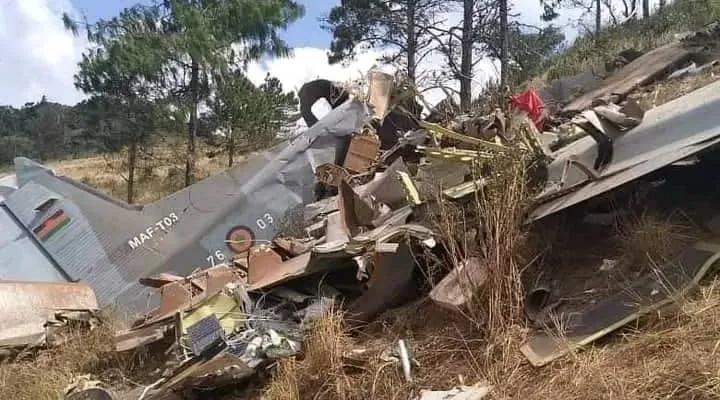Africa-Press – Malawi. A new international investigation into last year’s plane crash that claimed the lives of Malawi’s Vice President and eight others has revealed that the tragedy was caused by the flight crew’s decision to fly under visual navigation in dangerously poor weather conditions.
The Dornier 228-202(K) military aircraft, operated by the Malawi Air Force, crashed into the slopes of Nthungwa Forest in Nkhata Bay District on June 10, 2024. All nine people on board, including Vice President Saulos Chilima, died on impact.
The German Federal Bureau of Aircraft Accident Investigation (BFU), which led the investigation at Malawi’s request, concluded that the aircraft entered Instrument Meteorological Conditions (IMC) while flying under Visual Flight Rules (VFR) – a mismatch that led to the aircraft striking rising terrain in poor visibility. This is classified as a Controlled Flight Into Terrain (CFIT) – a crash where a fully functional aircraft is inadvertently flown into the ground.
“The accident occurred because the crew continued flying at low level in marginal weather, lost situational awareness, and were inadequately prepared for the flight,” the report states.
According to investigators, the crew had been warned of poor weather conditions but chose to proceed visually rather than rely on their Instrument Flight Rules (IFR) plan, which would have offered safer altitude and routing. Satellite navigation equipment on board had terrain warnings, but there were no clear procedures in place to ensure pilots used them effectively.
The report also criticized lapses in weather briefing procedures and equipment maintenance:
•The Emergency Locator Transmitter had a battery that expired in 2004 and failed to send a distress signal.
•The flight crew did not obtain an official weather briefing for the route to Mzuzu, relying instead on a telephone call to local airport staff.
•Meteorological services in Malawi were found to lack comprehensive en-route weather data, leaving pilots with only limited information.
Data from the aircraft’s GPS system showed that the plane flew as low as 185 feet above ground before crashing at a high forward speed into a wooded hill near a telecommunications tower.
The BFU issued six safety recommendations, including calls for improved pilot training, better weather information services, modern emergency equipment, and stricter oversight of military aviation operations.
The report raises serious questions about Malawi’s aviation safety systems and air force procedures, particularly around high-profile flights involving senior government officials.
A separate Malawian Commission of Inquiry report released earlier this year echoed some of the same concerns and recommended broad reforms to civil and military aviation protocols.
As the country continues to mourn the loss of a national leader, the final report provides not only answers—but a roadmap to help prevent future tragedies in Malawi’s skies.
For More News And Analysis About Malawi Follow Africa-Press






